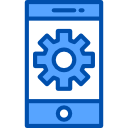Cross-Platform Mobile Development Tools Overview: Build Once, Reach Everywhere
Key players you should know
React Native, Flutter, .NET MAUI, Kotlin Multiplatform Mobile, and Ionic with Capacitor dominate conversations. Each balances performance, ecosystem maturity, UI control, and learning curve differently, shaping how you plan your product timeline.
When cross-platform makes sense
Choose cross-platform when speed to market, shared code, and synchronized features outweigh nuanced platform-specific polish. Lean teams, constrained budgets, and frequent pivots typically benefit most, especially when UI parity matters more than deep native customizations.
A quick story from the trenches
Our friend Maya led a three-person team building a wellness app in Flutter. They shipped iOS and Android in eight weeks, unified design tokens early, and avoided duplicate logic. Post-launch, they iterated weekly without splitting roadmaps.
Architectural Approaches and Rendering Models
React Native renders platform-native views and bridges JavaScript to native modules. With the new architecture, Fabric and TurboModules reduce overhead, while Hermes optimizes startup. The trade-off: bridge complexity and occasional platform-specific edge cases to profile and tame.
Flutter paints every pixel via Skia or Impeller, offering consistent UI and smooth animations across devices. AOT compilation helps release performance, while hot reload speeds iteration. You gain visual consistency, yet must intentionally respect platform conventions where needed.
Kotlin Multiplatform Mobile shares business logic while keeping native SwiftUI or Jetpack Compose for UI. It’s ideal for teams valuing native look-and-feel and platform-specific experiences, while still avoiding duplicated networking, serialization, and domain logic across codebases.


Measure cold starts on older devices, not just simulators. Flutter’s engine adds some weight; React Native benefits from Hermes; .NET MAUI and KMM rely on native toolchains. Trim assets, split APKs or app bundles, and prune dependencies relentlessly.

Aim for a rock-solid 60fps, with 120fps where available. Batch state updates, precompute layouts, and favor GPU-friendly effects. Profile layout passes, main-thread work, and shader compilation; cache aggressively to keep complex transitions gracefully fluid across platforms.

Use well-maintained plugins for cameras, sensors, biometrics, and storage. When necessary, write custom native modules for hot paths. Keep bridges or FFI calls coarse-grained, minimize serialization overhead, and validate performance on real devices with realistic data shapes.
Developer Experience and Tooling
Flutter’s hot reload, React Native’s Fast Refresh, and Compose previews shorten feedback loops dramatically. Encourage tiny commits, design tokens, and component libraries, so rapid UI iteration doesn’t degrade consistency, accessibility, or long-term maintainability when deadlines tighten.
Developer Experience and Tooling
Android Studio, Xcode, Visual Studio, and VS Code all shine with the right plugins. Linting, codegen, and refactors save hours weekly. Share your favorite extensions in the comments, and we’ll compile a reader-curated toolchain guide.
Developer Experience and Tooling
Use Flipper with React Native, DevTools with Flutter, and native profilers when diagnosing tricky bottlenecks. Centralize logs, add structured contexts, and baseline key performance metrics early. Automated alerts catch regressions before users feel them painfully.
Design Systems and Platform Idioms
Codify colors, typography, spacing, and motion in tokens, then map them to components across toolchains. Flutter’s themes or React Native libraries help keep parity. Document examples and pitfalls, and invite your designers to review interactive builds continuously.
Design Systems and Platform Idioms
Adopt iOS navigation patterns, back gestures, and typography while embracing Android’s system bars and hardware back behavior. Small platform-aware tweaks make apps feel native. Track deviations intentionally, and explain rationale to avoid accidental inconsistency creeping in unnoticed.
Testing, CI/CD, and Shipping
Flutter offers widget tests; React Native integrates well with Jest and Detox; KMM shares unit tests across platforms. Test critical journeys first, then expand coverage. Readers: share your flakiest tests and how you finally tamed them.


Testing, CI/CD, and Shipping
Use Fastlane, GitHub Actions, Bitrise, or Codemagic to automate signing, versioning, screenshots, and store uploads. Keep secrets safe, notarize macOS artifacts when needed, and gate releases behind canary channels to validate performance at small scale first.
Ecosystems, Longevity, and What’s Next
Audit plugin popularity, release cadence, issue responsiveness, and platform parity. Favor fewer, well-supported dependencies. If you maintain one, invite contributors and document upgrade paths. Comment with libraries you trust, and we will spotlight community favorites soon.
Track OS deprecations, supply-chain risks, and permission changes. Automate dependency auditing and reproducible builds. Plan deprecation windows, and communicate early with stakeholders. Security is product velocity: fewer emergencies mean more thoughtful, user-focused iteration every single week.
Watch React Native’s new architecture adoption, Flutter’s Impeller rollout, .NET MAUI refinements, and KMM’s growing tooling. WebAssembly, progressive bundling, and richer device APIs will expand options. Subscribe to follow deep dives as these shifts crystallize opportunities.
